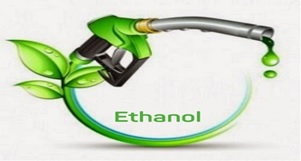13 October, 2025
India’s Target of 27% Ethanol Blending in Petrol (E27) by 2030
Wed 27 Aug, 2025
Context
India has set an ambitious target to achieve 27% ethanol blending in petrol (E27) by 2030, marking a major expansion of its Ethanol Blended Petrol (EBP) Programme. This move supports India’s twin goals of energy security and environmental sustainability.
What is Ethanol Blending?
- Ethanol is a renewable biofuel, commonly derived from sugarcane, maize, and surplus foodgrains. When blended with petrol, it reduces the use of fossil fuels and lowers carbon emissions. The blending ratio is expressed as E5, E10, E20, etc., denoting the percentage of ethanol in petrol.
About the EBP Programme:
| Feature | Details |
| Launched | 2003 |
| Initial blending target | 5% (E5) |
| Current target (as of 2025) | E20 by 2025; now extended to E27 by 2030 |
| Administered by | Ministry of Petroleum and Natural Gas (MoPNG) |
| Coordinating bodies | OMCs, Department of Food & Public Distribution (DFPD), MoA |
Objectives of the EBP Programme:
- Reduce dependence on crude oil imports (India imports ~88% of its crude).
- Save foreign exchange reserves by cutting oil imports.
- Lower vehicular emissions and meet global climate commitments.
- Ensure fair and assured income to farmers by using sugarcane, maize, etc.
- Promote second-generation ethanol from crop residues and stubble.
Benefits of E27 Ethanol Blending:
1. Energy Security:
- India’s heavy reliance on crude oil imports leaves it vulnerable to global price shocks.
- Ethanol blending reduces fossil fuel usage, enhancing energy self-reliance.
2. Environmental Gains:
- Ethanol helps cut carbon monoxide and hydrocarbon emissions.
- It plays a critical role in achieving India’s Net Zero Emissions goal by 2070.
3. Farmer Welfare:
- Assured market for crops like sugarcane and maize.
- Over ₹1.2 lakh crore has been transferred to farmers through ethanol procurement in the last decade.
4. Rural Industrial Development:
- Ethanol distilleries set up in rural areas generate employment and local economic activity.
- Reduces distress migration and boosts the rural economy.
5. Circular Economy and Waste-to-Energy:
- Use of crop residues (like paddy stubble) for second-generation ethanol production helps address stubble burning.
- Waste is turned into energy, promoting a circular economy.
Major Government Initiatives Supporting E27 Goal:
| Initiative / Scheme | Objective / Role |
| PM-JI-VAN Yojana | Promote second-generation ethanol from agricultural residues and waste |
| SATAT Scheme | Encourage compressed bio-gas (CBG) as automotive fuel |
| National Bio-Energy Mission | Promote production and use of biofuels and biomass |
| BIS Specifications (B100, E20, etc.) | Create fuel standards for various blends |
| National Policy on Biofuels, 2018 (Revised 2022) | Set targets for 20% ethanol blending by 2025 and now E27 by 2030 |
| Interest Subvention Scheme for Ethanol | Financial support for setting up ethanol plants |
| OMCs’ Ethanol Purchase Agreements | Oil Marketing Companies (OMCs) procure ethanol at fixed rates from distilleries |
Challenges Ahead:
- Infrastructure Gap: Need for ethanol-ready vehicles, dedicated pipelines, and blending units.
- Feedstock Availability: Scaling up maize and sugarcane production sustainably without affecting food security.
- Price Volatility: Ethanol price must be attractive for both producers and OMCs.
- Technological Need: Second-generation ethanol technologies are still costly and underdeveloped.


















